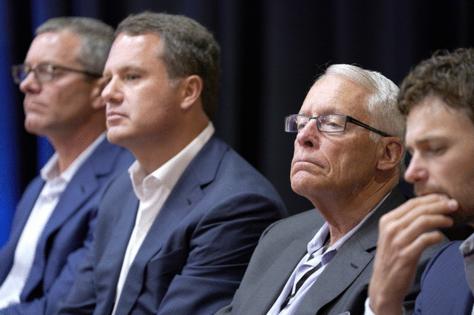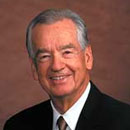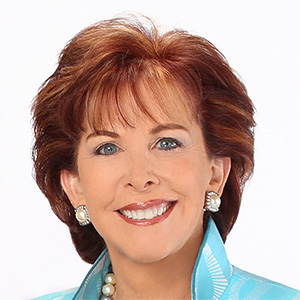Walmart CEO Retires, US Head to Lead Retailer Into AI Age
Published in Business News
Walmart Inc. Chief Executive Officer Doug McMillon, who over a decade ushered the big-box behemoth into the Internet age, will retire in February. He’ll be replaced by U.S. head John Furner — long viewed as the heir apparent.
Furner, 51, takes over as Walmart faces a fast-moving shift toward artificial intelligence, an uneven U.S. economy, and a rapidly changing global workforce. The company recently inked a partnership with OpenAI, which will allow shoppers to directly make purchases through ChatGPT. The retailer has said automation has helped it keep headcount steady at about 2 million employees globally.
Investors were initially rattled by the change at the top, with the company’s shares sliding as much as 3.6% on Friday. They pared those losses and were trading down 1% as of 12:15 p.m. in New York.
“Walmart is closing out its chapter associated with building a well-rounded digital foundation, and is now moving into the escalation and acceleration of AI,” Mizuho analyst David Bellinger said.
McMillon — who became CEO in 2014 — said he had worked with Furner for 20 years and that his leadership would take the company to the “next-level.” Furner is “uniquely capable of leading the company through this next AI-driven transformation,” he said.
Like McMillon, 59, Furner has spent decades at the world’s largest retailer. His father also worked at Walmart, and he grew up on farms in Arkansas before starting at the company as a part-time worker in the garden center at a Bentonville supercenter.
“I’ve been around the company since I was three years old,” Furner told Bloomberg News in an interview earlier this year.
The new chief has also been “intimately involved” in Walmart’s increasing use of technology and AI, according to Truist Securities analyst Scot Ciccarelli, and now his task is “to continue to execute against the game plan they have already put in place.”
During a town hall meeting on Friday, McMillon received multiple standing ovations from staffers, according to people familiar with the matter who weren’t authorized to speak publicly. When asked if he planned to run for president of the U.S. — a nod to McMillon’s active involvement in Washington across multiple administrations — he told employees there was “zero chance,” these people said.
Furner joined McMillon on stage at Sam Walton Hall, a 200,000-square-foot building at the company’s new sprawling headquarters. He promised to meet with global teams and immediately dive into the depths of the global business.
“As we head into the holiday season, my priority is leading the U.S. segment to a strong finish,” Furner said in a memo to employees reviewed by Bloomberg News.
He said he was excited to “guide us through this next era” and that he was “focused on supporting a seamless leadership transition for the year ahead.”
Walmart said Furner’s new compensation hasn’t yet been set.
The company, which often rotates senior executives around its big divisions, said it will announce Furner’s successor before the end of the 2026 fiscal year. Walmart’s U.S. business is the retailer’s crown jewel with hundreds of billions of dollars in sales, making the chief of the division a crucial role.
Turning Point
McMillon’s retirement marks the end of an era for Walmart, the world’s largest retailer and U.S. employer. McMillon, who started working at Walmart in his teens, rose up the ranks to CEO in 2014 and transformed the retailer into a digital powerhouse consisting of e-commerce, advertising and membership businesses. He managed to quell decades of labor unrest by raising wages and providing better worker benefits.
In an interview earlier this year with Bloomberg at the company’s Bentonville, Arkansas, headquarters, McMillon reflected on the shift to e-commerce in the early 2000s.
“It was very clear to me that that was a really important part of the future,” McMillon said. “There were debates internally as to how aggressive we should be, and I was always on the aggressive side of that.”
Since he took the helm more than a decade ago, Walmart’s shares have more than quadrupled. The stock had gained 13% this year as of Thursday’s close, slightly trailing the rise of the S&P 500 Index.
When asked earlier this year how much time he had left in the role, McMillon declined to provide an immediate timeline.
“I shouldn’t stay here forever, but I sure do like what I do, and I don’t know what else I’m going to do,” McMillon said in the interview. “I’m starting my 12th year, and it has flown by.”
McMillon’s retirement decision was his own and the board accepted his notice when it met for a standing meeting this week, according to a person familiar with the matter who was not authorized to speak publicly. The timing of the announcement was managed in consultation with the board and chair, the person said.
He’ll stay on the board until June and will remain an adviser to Furner through fiscal year 2027. McMillon will serve as an executive officer with a $1.5 million salary. Walmart agreed to move up the vesting of his 2028 stock awards to the prior year.
A Walmart spokeswoman said the leadership transition was “planned and thoughtful” and marks the next step in the company’s long-term strategy. The two previous CEO transitions followed a similar pattern of occurring at the end of the year with the outgoing boss remaining on the board and as an adviser for a period of time, she said.
The company is expected to report third-quarter earnings next week.
AI Shift
In a memo to employees, McMillon thanked his colleagues for being willing to go along with him in one of the biggest transformations in corporate America and urged them to get ready to face another monumental shift in how the company did business.
“There have been times when some people doubted us,” he said in the memo, which was viewed by Bloomberg News. “Those people underestimated how much you care, and they underestimated your ability to change.”
Before taking the helm of Walmart’s largest and most important business in 2019, Furner ran the company’s warehouse division Sam’s Club. He also spent three years in China helping lead the division there, an experience that he said shaped his view on ever-evolving businesses.
“What I learned was how fast you can move when you don’t have the constraints of a lot of physical legacy,” Furner said.
Furner led Walmart’s U.S. operations, which includes more than 4,600 stores, through the pandemic and navigated an unprecedented rush to online delivery as well as a massive supply chain breakdown that upended the business.
Over the last few years, he also helped remodel its fleet of stores to make them more modern and overhauled the back-end technology that powered the company’s massive global supply chain. He’s had to contend with everything from how a rise in GLP-1s is impacting consumer spending to egg shortages and tariff upheaval.
“John checks a lot of the same boxes” as McMillon, said Bradley Thomas, managing director of KeyBanc Capital Markets. “He really started as an hourly employee and rose up through the ranks. That’s important for the culture.”
The 32-year-old company veteran, who talks with AI while driving to work, has said that the future of retail will be determined by a mix of humans and tech.
“We have a lot more work to do, but in 2025, with artificial intelligence, the data we have, our understanding of how those assets can work flexibly is quite an exciting opportunity,” Furner told Bloomberg News in an interview earlier this year.
—With assistance from Janet Freund, Uma Bhat and Kim Bhasin.
(Updates with additional material throughout.)
©2025 Bloomberg L.P. Visit bloomberg.com. Distributed by Tribune Content Agency, LLC.












Comments